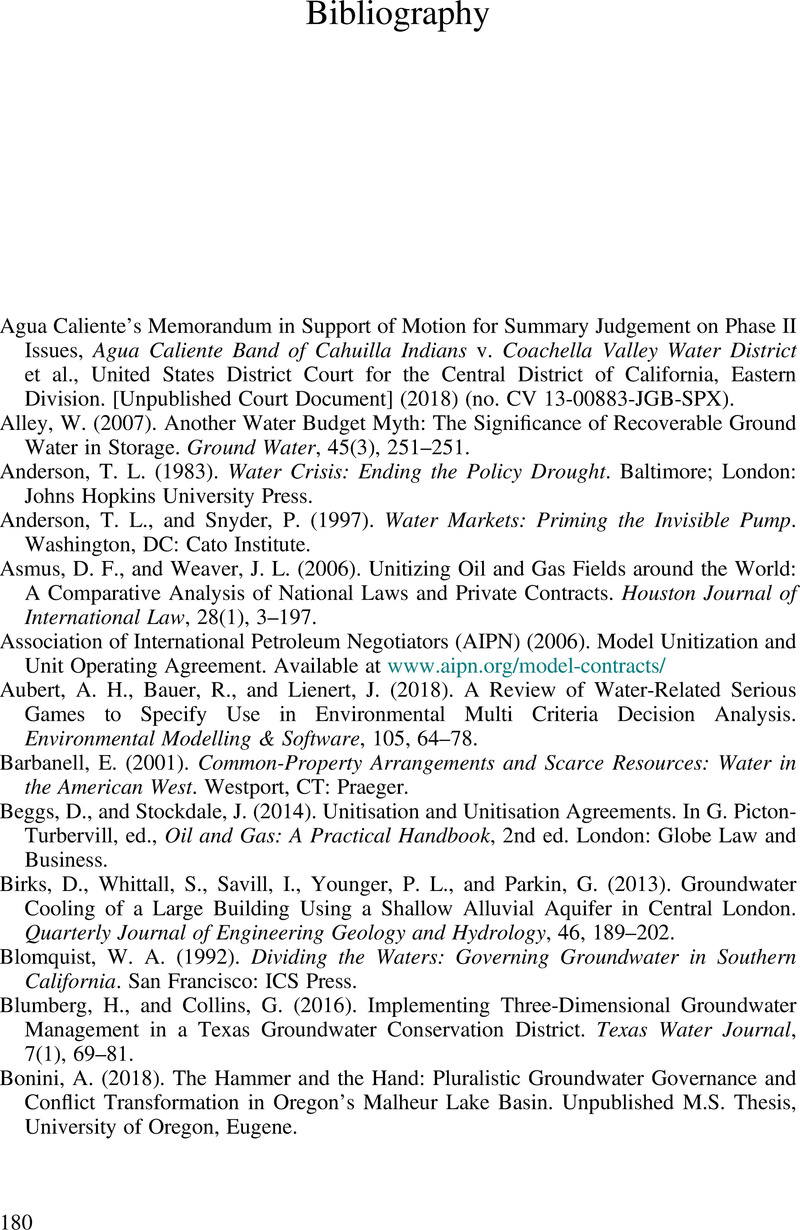Book contents
- Collective Aquifer Governance
- Collective Aquifer Governance
- Copyright page
- Contents
- Figures
- Tables
- Acknowledgments
- Abbreviations
- 1 Introduction
- 2 Overview of the History of Collective Action on Subsurface Resources
- 3 Governance of Groundwater and Aquifers
- 4 Unitization and Collective Aquifer Governance Agreements
- 5 Determination and Redetermination
- 6 The Role of the Expert
- 7 The Next Transresource
- 8 Pore Spaces
- 9 Application to an Aquifer System
- 10 Getting Around Agreeing to Disagree
- 11 Serious Gaming and Unitization
- 12 Conclusions and Recommendations for Future Research
- Appendix Model Collective Aquifer Governance Agreement
- Glossary
- Bibliography
- Index
- References
Bibliography
Published online by Cambridge University Press: 20 January 2022
- Collective Aquifer Governance
- Collective Aquifer Governance
- Copyright page
- Contents
- Figures
- Tables
- Acknowledgments
- Abbreviations
- 1 Introduction
- 2 Overview of the History of Collective Action on Subsurface Resources
- 3 Governance of Groundwater and Aquifers
- 4 Unitization and Collective Aquifer Governance Agreements
- 5 Determination and Redetermination
- 6 The Role of the Expert
- 7 The Next Transresource
- 8 Pore Spaces
- 9 Application to an Aquifer System
- 10 Getting Around Agreeing to Disagree
- 11 Serious Gaming and Unitization
- 12 Conclusions and Recommendations for Future Research
- Appendix Model Collective Aquifer Governance Agreement
- Glossary
- Bibliography
- Index
- References
Summary

- Type
- Chapter
- Information
- Collective Aquifer GovernanceDispute Prevention for Groundwater and Aquifers through Unitization, pp. 180 - 189Publisher: Cambridge University PressPrint publication year: 2022



